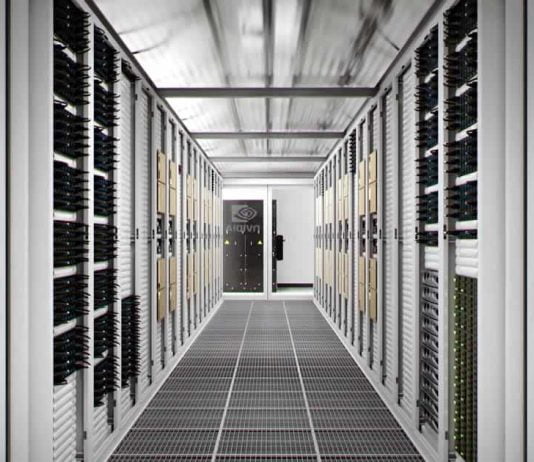Amid the global pandemic, Nvidia assembled the world’s seventh-fastest supercomputer — Selene — in three weeks with a team of six socially distant people and a small robot.
Previous Nvidia supercomputers took months to build and were extremely difficult to maintain and upgrade.
Nvidia Selene is a unique supercomputer, as it uses an architecture based on GPU accelerators (NVIDIA’s DGX SuperPOD) rather than CPU-based designs like the vast majority of Top-500 supercomputers.
In figures, Selene supercomputer uses 2,240 NVIDIA A100 GPUs and 560 AMD Epyc 7742 CPUs. The accelerator is equipped with 6,912 CUDA cores, 40 GB of dedicated HBM2 memory, and 432 tensor cores specialized in artificial intelligence, inference, and deep learning tasks. AMD CPUs feature 64 cores/128 threads native processing.
Altogether, the machine has a maximum theoretical performance close to 35,000 teraflops — a figure that, overall, makes it the 7th most powerful supercomputer in the world.
Nvidia Selene is currently working on around a thousand tasks, mainly geared towards AI development and neural network training. A portion of the investigation is devoted to the research against the coronavirus.


